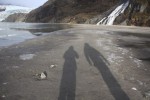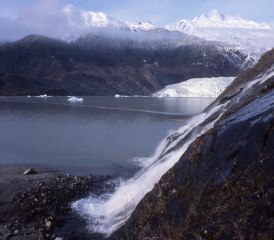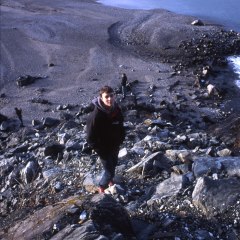After visiting Nugget Falls, and seeing the other visitors on that cold November day, I started thinking about the presence and absence of the camera-toting tourists.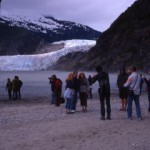 With that idea, I returned to Nugget falls in the height of the tourist season to try to capture some Alaskan Wildlife.
With that idea, I returned to Nugget falls in the height of the tourist season to try to capture some Alaskan Wildlife.
I approached the project in two ways. In the first, I went among the tourists. I openly carried my camera and snapped pictures as I saw fit. I didn’t try to be obscure or secretive, and I my TL120-1 was certainly not discrete. I was able to capture some characteristic tourist activities. These included primping for the camera, chimping the group shot on the camera, bickering over the camera, and arguing over the correct way to operate the camera. You get the idea. I fit right in.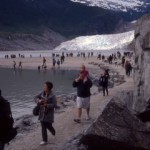
In the second case, I set up a blind on a common game trail. I tried to get my 20′ air-release to work, but it failed me and I was forced to work with a 10″ cable release. I aimed the camera, set its exposure, and settled back onto a boulder. By kicking back on the rock with my arms crossed, I was able to hold the cable release in my fingers and trip it when I felt the scene before me was set. Too bad the TL120 lacks a motor advance or I wouldn’t have needed to get up and break my repose. One person called me out on the rig he spotted in the rocks and correctly identified the device as a “big stereo camera”.
